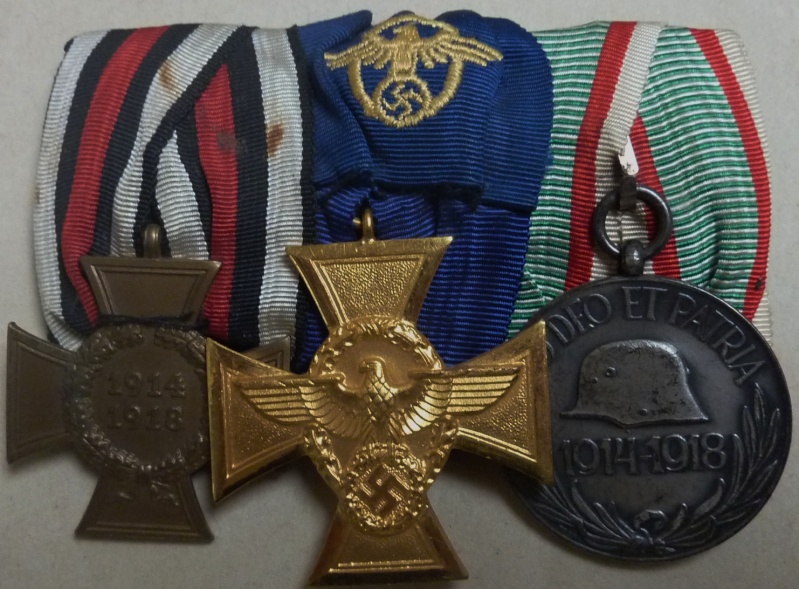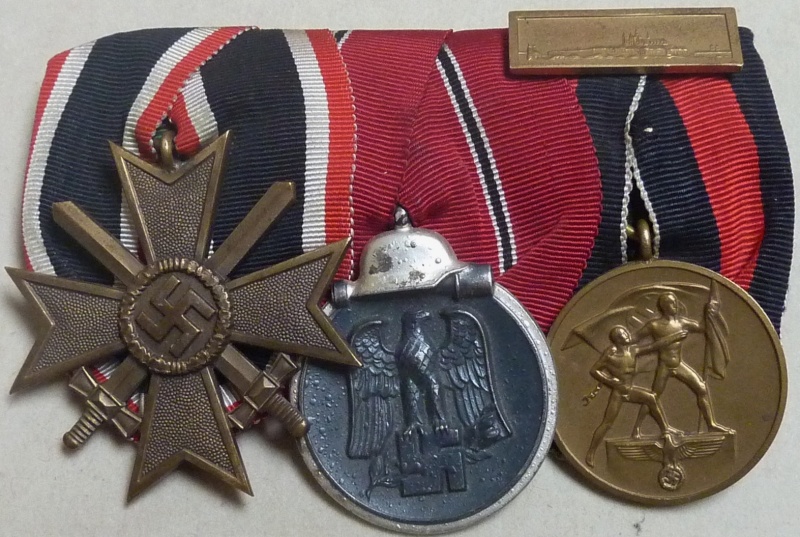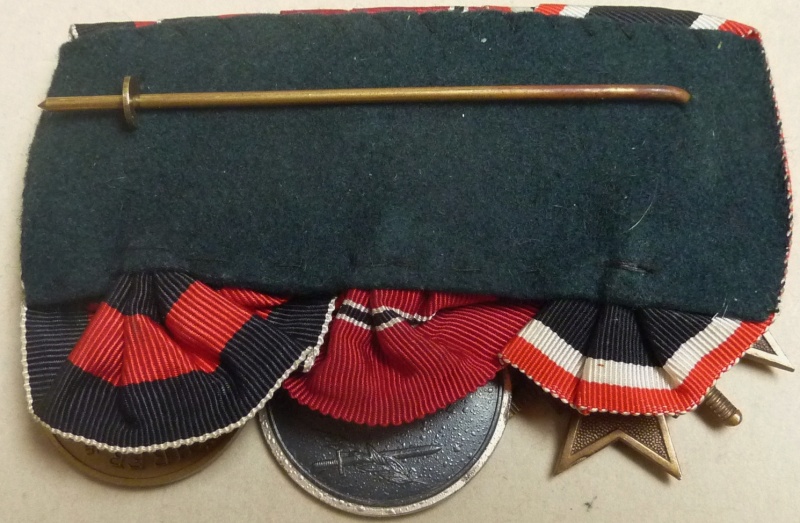Announcement
Collapse
No announcement yet.
several medal bars
Collapse
X
-
3 very nice bars!
Only thing I have to say is, that on the first bar the "Hungarian commemorative medal for WWI fighters" MAYBE exchanged. This man had a German "Ehrenkreuz für KRIEGSTEILNEHMER", so IMO he should also have a Hungarian medal for NON fighters (without swords and helmet). This medal is rarer than the one for fighters, so someone MAY have changed the medal.
Just my thoughts.
Kind regards, Peter
Comment
-
I don't think there was any co-relation between the German and Hungarian awards for combatants or non-combatants - the award criteria seem to be quite different and the German non-combatants cross seems to show up much more frequently than the equivalent Hungarian award. In any case, the main highlight is the Deumer marked non-combatants cross with the bee logo - that's nice to see.
Comment
-
This is completely correct, IMO. There is nothing wrong with the three-place police medal bar posted by Loren. The ribbon on that bar is for the WW1 Hungarian Commemorative Medal with swords, so the medal is correct with the swords. The Hungarian Commemorative Medal without swords would have a completely different ribbon and, as Peter mentions, the medal without swords is quite rare. Don't worry about the Hindenburg Cross being without swords while the Hungarian Commemorative is with swords. It is actually quite common to see that. Basically any soldier in uniform with an Austro-Hungarian connection during WW1 could get the Hungarian Commemorative with swords, regardless of whether he was a frontline fighter or had some rear-echelon duty and never even heard the sound of guns. The Hungarian Commemorative without swords would only go to non-military participants. The Hindenburg Cross was a bit different: You actually had to be in the military and at the front to get the swords. If you were in the military but not at the front, you could only get the Hindenburg Cross without swords. The medal bar shown by Loren was to a guy that was in military uniform during WW1, but assigned to some rear-echelon duty. The military uniform alone made him eligible for the Hungarian Commemorative with swords, but his rear-echelon status would only qualify him for a Hindenburg Cross without swords. I hope this makes sense. It's a simple matter of two different medals having different award criteria.Originally posted by James Clark View PostI don't think there was any co-relation between the German and Hungarian awards for combatants or non-combatants - the award criteria seem to be quite different and the German non-combatants cross seems to show up much more frequently than the equivalent Hungarian award. In any case, the main highlight is the Deumer marked non-combatants cross with the bee logo - that's nice to see.
Best regards,
TomMihi libertas necessest!
Comment
-
Hi all
Thank you for this really interesting explanation Tom.
I would have a another question.
For each of these 3 bars, what were the regulations in terms of cloths/uniforms to wear the bar ? I mean, for example for the ww2 fighter, only the dress uniform or also the combat uniform and civil cloths were ok ? And was the policeman allowed to wear the bar on civil cloths ?
Kind regards
Laurent
Comment
-
Hi Laurent,Originally posted by loren View PostHi all
Thank you for this really interesting explanation Tom.
I would have a another question.
For each of these 3 bars, what were the regulations in terms of cloths/uniforms to wear the bar ? I mean, for example for the ww2 fighter, only the dress uniform or also the combat uniform and civil cloths were ok ? And was the policeman allowed to wear the bar on civil cloths ?
Kind regards
Laurent
Your first and third medal bars are military mounts, having order of precedence from the viewer's left to right. The first bar is obviously to a policeman, but since the regulations for police mirrored that of the armed forces, they both can be considered military mounts. These bars could be worn on the parade dress tunic, the service dress tunic (when utilized for parade or other formal purposes), and the walking-out dress uniform. The medal bar was only worn for parades, weddings, and other special/formal functions. At all other times, the ribbon bar would be worn in lieu of the medal bar. There was even a regulation in place that stated:
"The mounted groups will be worn only in peacetime on parade uniforms for formal functions."
and:
"During wartime, only the ribbon bar and not the actual decorations may be worn."
Obviously, these regulations were not strictly adhered to, but this is just another reason why most senior officers and senior NCOs were not getting their medal bars upgraded during the war. It was mostly the younger officers and enlisted men that had medal bars assembled during the war, so they could wear their medals for a wartime wedding.
Anyway, your first and third medal bars were meant to be worn on uniforms and never on civilian attire.
Your second medal bar is a frack mount and was intended for use on the civilian tuxedo for formal occasions. The frack bar was worn at an angle on the left lapel. And the order of precedence was reversed from that of the military mount: precedence was from the viewer's upper right to lower left.
Best regards,
TomMihi libertas necessest!
Comment
Users Viewing this Thread
Collapse
There are currently 2 users online. 0 members and 2 guests.
Most users ever online was 10,032 at 08:13 PM on 09-28-2024.










Comment